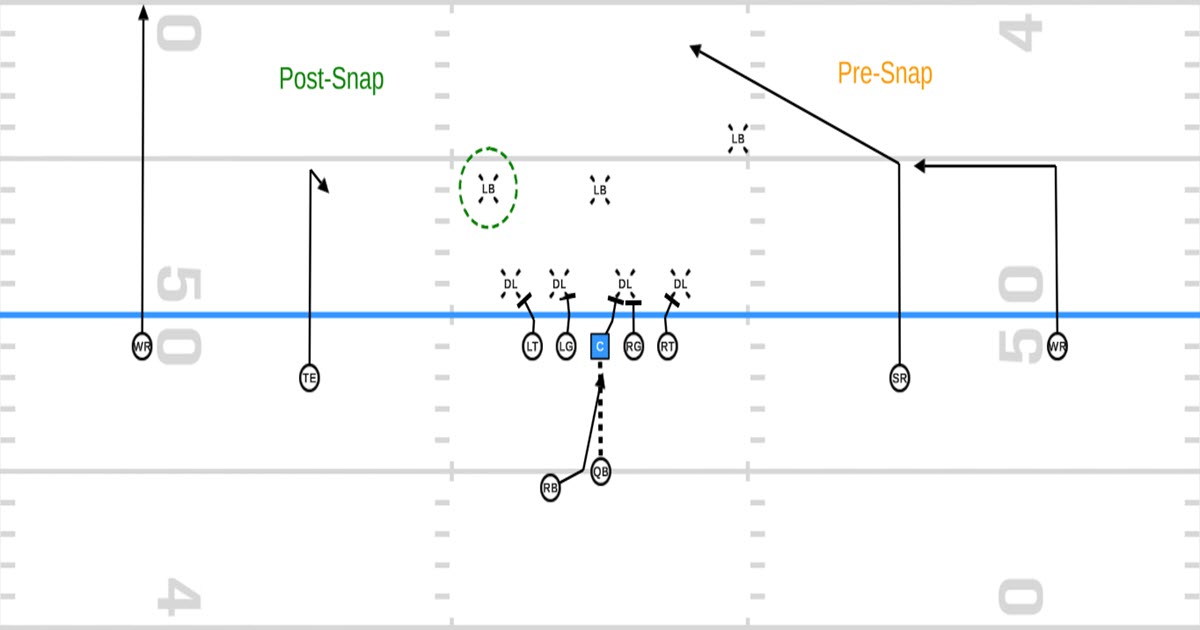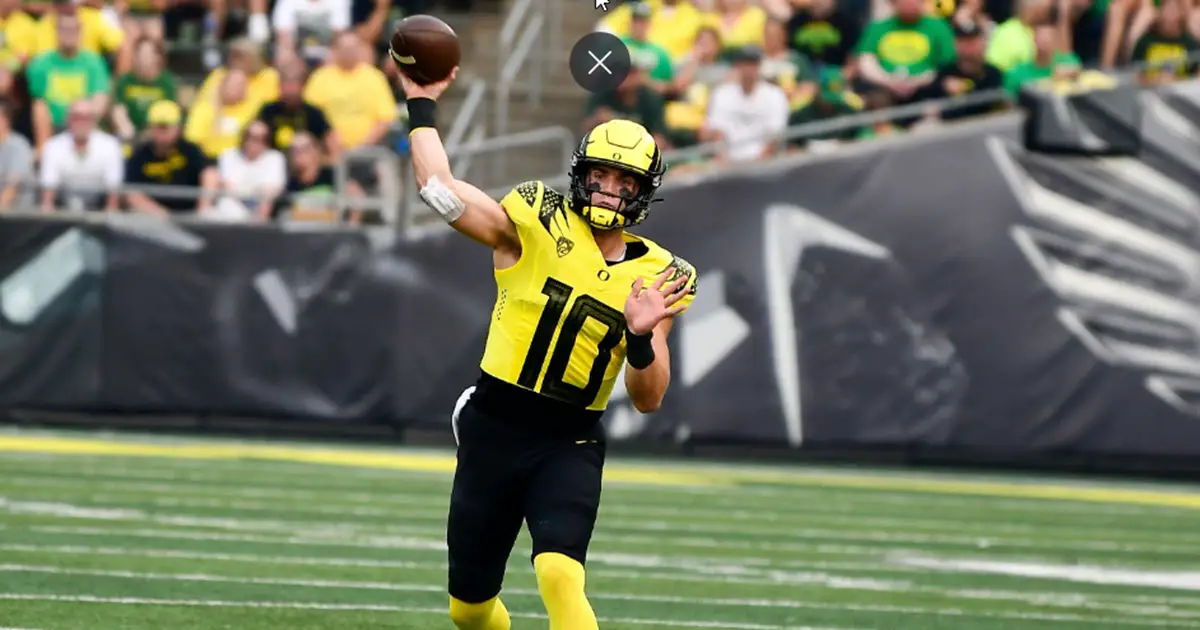Since the hiring of Coach Will Stein as the new Oregon Ducks offensive coordinator, it has been pretty well established that he has built a large portion of his offense around RPO concepts. And we’ve kind of taken a basic surface-level look at a couple of different RPOs. Now let’s go just a little bit deeper and dig into a concept that has both pre- and post-snap reads, and how the quarterback determines where to go with the ball.

A 2×2 Spread Inside Zone RPO
The play we’re going to use to illustrate these different components is a simple 2×2 Spread Inside Zone RPO. Everything about the Inside Zone portion of the play is exactly the same as any traditional IZ run. If an offensive lineman is covered by a defender, the OL will block that defender. If the OL is uncovered, he will work to the next playside gap and look to help his linemate in a double team or move up to the next level of the defense.
On the pre-snap side of this concept, the slot and wide receiver will work a slant/drive combo. The primary target here will be the slot. What the QB is deciding, before the snap, is whether the box is currently overloaded or if pressure is going to overload it. Because there is a post-snap read on the other side of the field, the box would need seven defenders to be considered overloaded.
If the QB decides that he has an overloaded look, he’ll ride the mesh with the RB and then fire the ball to the slant. Something that helps the QB with a clean window to the slant is that in most situations, defenders are taught to fill their run fits fast if they can see the QB’s back. But if they’re playing some sort of game there because they’ve seen the concept on tape, and they cloudy the slant, the QB can move to the drive or run the ball. He doesn’t want to dirt it because by the time the play gets to that point, OL are going to be downfield.
On the post-snap side, the WR runs the go route to occupy the corner, and the tight end runs a 5-yard hitch. If the QB has already decided that the box is not overloaded, he’ll call for the snap and read the backside linebacker (Green Circle). If the LB widens or gets deep, the QB will hand the ball off to the RB. If the LB fits the run, the QB will throw the ball to the hitch.
In the clip above, the UTSA Roadrunners QB decides that the box is overloaded because of the shallow depth of the safety, adding a seventh man to the box. This prompts him to go with his pre-snap slant/hitch combo and he hits the slot for a nice 40-yard gain. Notice how quickly the safety fits the run, opening the huge window for the slant.
On the post-read side, the LB that the QB would have read also fits the run, leaving the hitch open too. There are so many ways that the defense can be wrong when they’re up against a concept like this. And while Coach Stein has some RPOs that are strictly post-snap reads, he has plenty that also incorporate the pre-snap.
Coach Eric Boles
Newark, Ohio
Top Photo Credit: Eugene Johnson

Phil Anderson, the FishDuck.com Volunteer editor for this article, is a trial lawyer in Bend Oregon.
Eric resides in Central Ohio, just outside the capital city of Columbus. He is a former offensive assistant and return game coordinator for the Ohio State – Newark/Central Ohio Technical College Titans football program.
He is an OSU-N graduate, having completed a Bachelor of Arts program in psychology.

